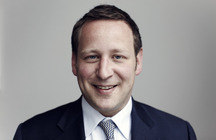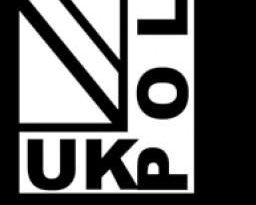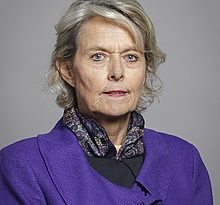Ed Vaizey – 2014 Speech at the RadioCentre Conference
The speech made by Ed Vaizey, the then Secretary of State for Digital, Culture, Media and Sport, on 3 July 2014.
Good afternoon everyone.
I’m really pleased to be here, and to see so many of you getting together to talk about the great survivor of the media world. Year after year, decade after decade, we’re told that the new kid on the block is going to come along and make the venerable old institution obsolete. Yet year after year, decade after decade, it continues.
But enough about Torin Douglas… Let’s talk about radio!
Television – that was going to sound the death knell for the wireless. By 1979 Buggles were even singing about how video had killed the radio star.
And the internet – well that was definitely going to be the end of radio. Why listen to someone else’s musical choices when you can simply download your own? Five years ago the influential TechCrunch website even ran a headline that proclaimed “Commercial radio is dead”.
Yet, in 2014, here we are. British adults consume around a billion hours of radio each week. If one person were to sit down and try and listen to that much programming, it would take them more than 100,000 years. Half of the world’s digital radio consumer sales take place in the UK. Commercial radio alone reaches over 34 million people every week. Last year the sector generated revenues of almost half a billion pounds. Not bad for a medium that was declared dead just five years ago.
Britain continues to be a nation of audiophiles. Despite the ever-increasing competition for people’s time and the growing range of online providers, broadcast radio continues to thrive in the digital age.
The key to this success is, of course, the quality of content. In an age where anyone with a broadband connection can instantly create their own music station, broadcasters have to have something distinctive to offer.
Innovative independent production companies have a huge role to play in delivering that, and I was really pleased to see so many UK indies getting the plaudits they richly deserve at last month’s New York Festivals Radio Awards.
British and Irish indies scooped a total of 40 Gold, Silver and Bronze awards, with the cherry on the cake being the Grand Award for TBI Media and Snappin’ Turtle. It’s been quite a year for TBI, who also helped Absolute Radio win a Bronze Radio Academy award for ‘The Manuscript’, a programme that was funded fully by its sponsor and broke new ground for the network.
Another of Absolute’s Gold awards was shared with independent producer Avalon, which just goes to show what can be achieved when different parts of the creative industries work together. And quality content doesn’t just bring awards – it also brings greater audiences and, with them, greater advertising revenues.
Competition for audiences may be fiercer than ever, but indies and broadcasters are showing the industry that it doesn’t have to be a race to the bottom. I sincerely hope this quest for quality continues, providing compelling entertainment and experiences for listeners and successful, innovative campaigns that really chime with advertisers.
Of course, in 2014, WHAT you broadcast isn’t the only thing that matters. Constantly evolving technology means that HOW you broadcast is also more important than ever. I’ll come to DAB and DAB+ in a moment, but first I want to address an issue that I know many of you are concerned about.
In December, I said that it was not yet time to announce dates for a final switchover to digital radio but that we fully supported the long-term transition to a digital future. However, I am very much aware that FM and AM licences rolled over under the 2010 Digital Economy Act will start to come up for renewal at the end of 2017, and that Ofcom has no power to extend them further.
I am sympathetic to this issue and appreciate the long-term worries it is causing the sector. I can assure you that this is something that is very much on my radar. I have asked my officials to make this issue a priority over the coming months and plan to say more on this question towards the end of the year.
I still want to keep up momentum on digital and have been working closely with Ford Ennals and having monthly progress meetings. So for example, my department has given OFCOM £500,000 for the Small-Scale DAB programme. This will test simple, cost-effective, small-scale applications of DAB. I want to see them deliver new ways to provide small commercial stations with a route to DAB.
Last month OFCOM held its first stakeholder event to discuss this important issue, and I was pleased to hear that it was extremely well attended. OFCOM has made it clear that the success – or otherwise – of this project will ultimately be dependent on gaining industry participation, so I’d like to take this opportunity to really encourage the sector to support this.
And that’s not all. I’m sure you all saw the announcement on Tuesday this week that OFCOM has advertised the licence for the second national commercial multiplex, D2. This is going to double the amount of national capacity available to commercial radio, creating more capacity for new national services. It will also open the way to the first DAB+ services.
While it’s important that we maximise the number of digital stations out there and ensure local stations have access to DAB, there is still work to do on the coverage of existing services.
Fortunately, I have good news on the coverage front. Thanks to the commitment of the Government, the BBC and commercial radio, another 4.3 million households will be able to tune in to DAB by end of 2016. That’ll take the coverage from 72 per cent of homes to around 90 per cent – and also bring almost 6,000 miles of roads under the DAB umbrella I hope that final details the plans will be announced in the next few weeks.
There’s good news in terms of new car conversion – one of key successes of the Digital Radio Action Plan. Fifty five per cent of new cars sold in April had digital radios fitted as standard, up from just five per cent four years earlier. That’s incredible progress but obviously there is still much more to do, especially in the aftermarket.
I recognise that half the battle is in making motorists aware of the existence and benefits of digital. That’s why, late last year, I announced plans to allow Digital Radio UK to use DVLA and DVSA communications to promote the digital message to drivers.
I’m pleased to say that, from November, we’ll start to see the fruits of this arrangement when DRUK’s digital radio tick mark is included on vehicle tax reminders. It may sound like a small step, but when you bear in mind that those reminders are, at some point in the year, sent to all vehicle owners in the UK – that’s 40 million people – it’s a great way of getting our message across.
That’s not the only place you’ll be seeing the tick mark. On the first of June, applications opened for domestic radio manufacturers who want to be part of the scheme, and Pure has already announced that it will be carried across its entire digital product range from later this year.
That’s the future. In the short-term there’s still plenty to look forward to. There’s an amazing summer of sport to enjoy, with the Tour de France, the Commonwealth Games, the tail end of Wimbledon and the British Grand Prix.
We’re in the midst of the music festival season, as the number of muddy music fans trooping back home earlier this week showed. And up and down the country, local fetes, festivals and fireworks will be bringing hundreds of thousands of people together to celebrate what it means to be British.
Throughout all this activity it will be local and national commercial radio stations, from Talk Sport to Jack FM my local station in Oxford that are keeping people entertained and informed, ensuring nobody misses a thing.
And we should not forget the fantastic work done by stations up and down the country – something which was highlighted in the Radio Centre Action Stations publication – whether the amount of locally made programming produced or the community work with almost £20 million for charity in the past year
I don’t doubt that the entrepreneurial spirit that has underpinned this success will continue to serve the sector well, allowing commercial radio to rise to the challenges presented by digital technology and to seize the opportunities it offers.
Be in no doubt momentum continues to be made toward digital through greater coverage, the work of the car industry, the announcement on D2 and progress on small scale DAB. We are still working toward a digital future.
Have a great conference.


